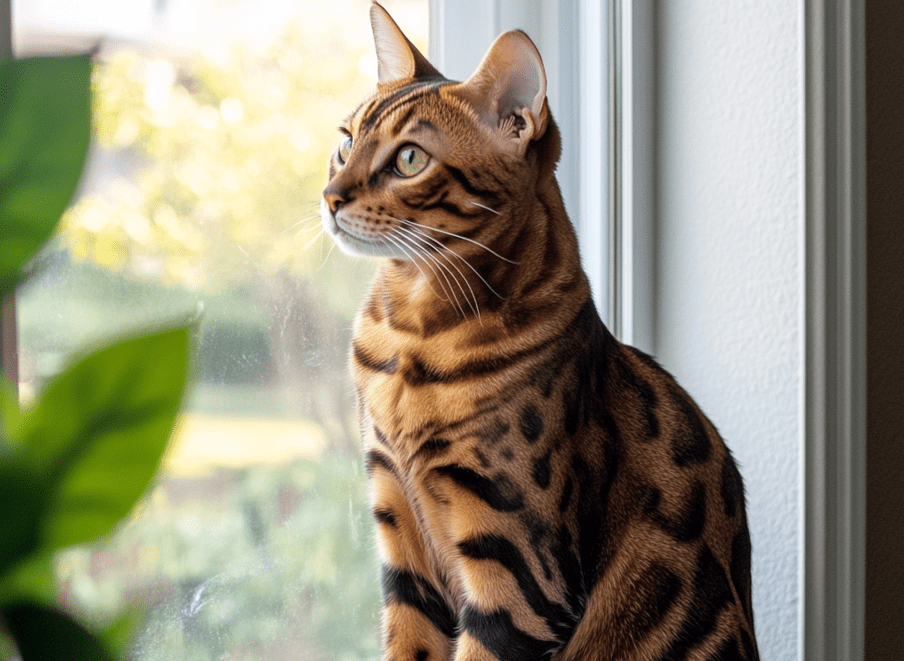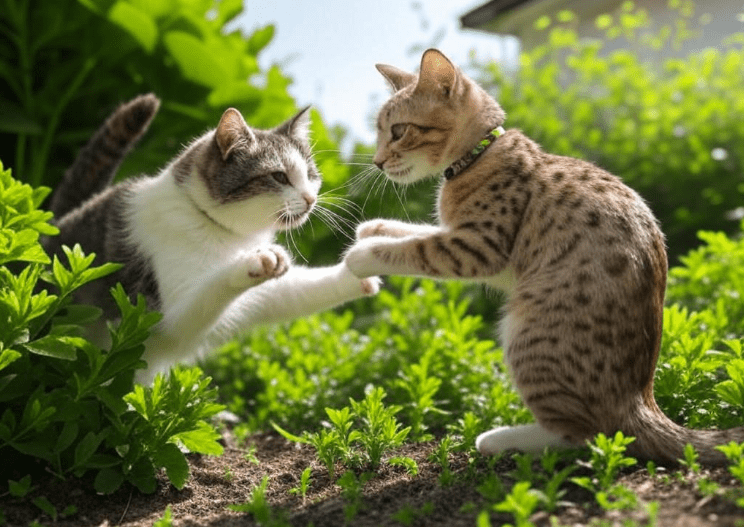
Bengal cats are known for their intelligence, agility, and insatiable curiosity, traits that make them both delightful and challenging companions. These qualities, rooted in their wild ancestry, often lead them to explore every nook and cranny of their environment, sometimes resulting in escapes from the home. Creating an escape-proof home for Bengal cat is essential to keep your feline friend safe while allowing them to satisfy their adventurous spirit. This comprehensive guide provides actionable steps, practical tips, and expert insights to secure your home and ensure your Bengal remains safe indoors.
Why Bengals Are Escape Artists
Bengals’ natural instincts drive their desire to explore and hunt, making them prone to seeking ways out of the home. Their escape tendencies stem from:
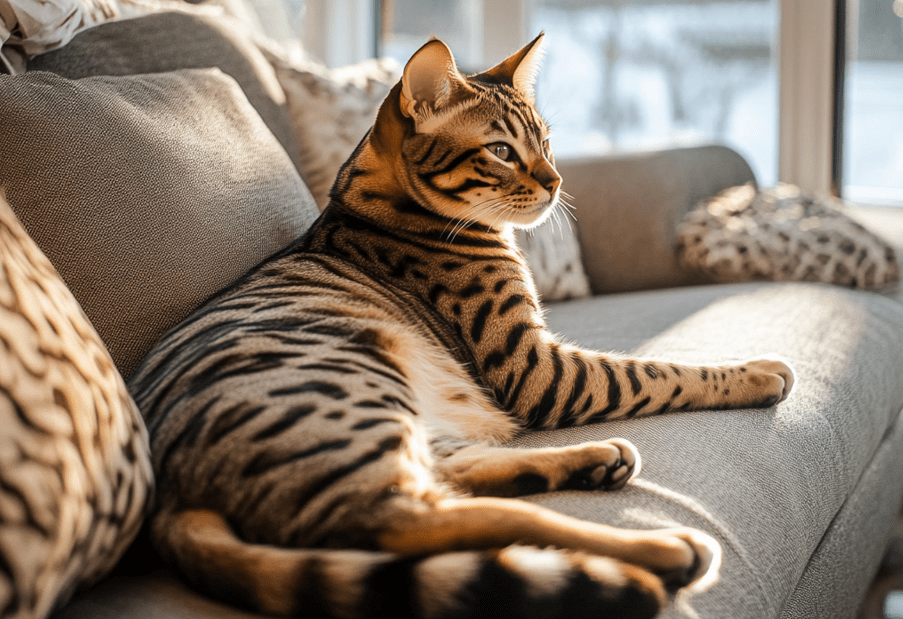
Curiosity: Bengals are drawn to new sights, sounds, and smells, often investigating open doors or windows.
High Intelligence: They quickly learn to open doors, unlatch windows, or exploit weak barriers.
Athleticism: Their agility allows them to jump high, climb, and squeeze through small spaces.
Hunting Instincts: Outdoor stimuli like birds or rustling leaves trigger their predatory drive.
An escape-proof home for Bengal cat addresses these traits by securing potential exit points and providing a stimulating indoor environment to reduce their desire to roam.
Risks of Escapes for Bengal Cats
Allowing a Bengal to escape poses significant risks, including:
Injury: Encounters with vehicles, predators, or hazardous objects can harm your cat.
Loss: Bengals may wander far and become lost, especially in unfamiliar areas.
Poisoning: Exposure to toxic plants, chemicals, or antifreeze is a danger outdoors.
Theft: Their striking appearance makes Bengals targets for theft.
Health Issues: Fights with other animals can lead to infections or parasites.
By making your home escape-proof, you protect your Bengal from these dangers while maintaining their well-being.
Benefits of an Escape-Proof Home
Creating a secure environment offers multiple advantages:
Safety: Eliminates risks associated with outdoor hazards.
Peace of Mind: Allows you to relax knowing your Bengal is secure.
Behavioral Health: Reduces stress and anxiety for both you and your cat.
Cost Savings: Prevents expenses from lost pets, injuries, or vet bills.
Enriched Indoor Life: Encourages focus on indoor stimulation, keeping your Bengal engaged.
How to Make Your Home Escape-Proof for a Bengal Cat: A Step-by-Step Guide
Securing your home requires a combination of physical modifications, behavioral strategies, and environmental enrichment. Follow these steps to create an escape-proof home for Bengal cat:
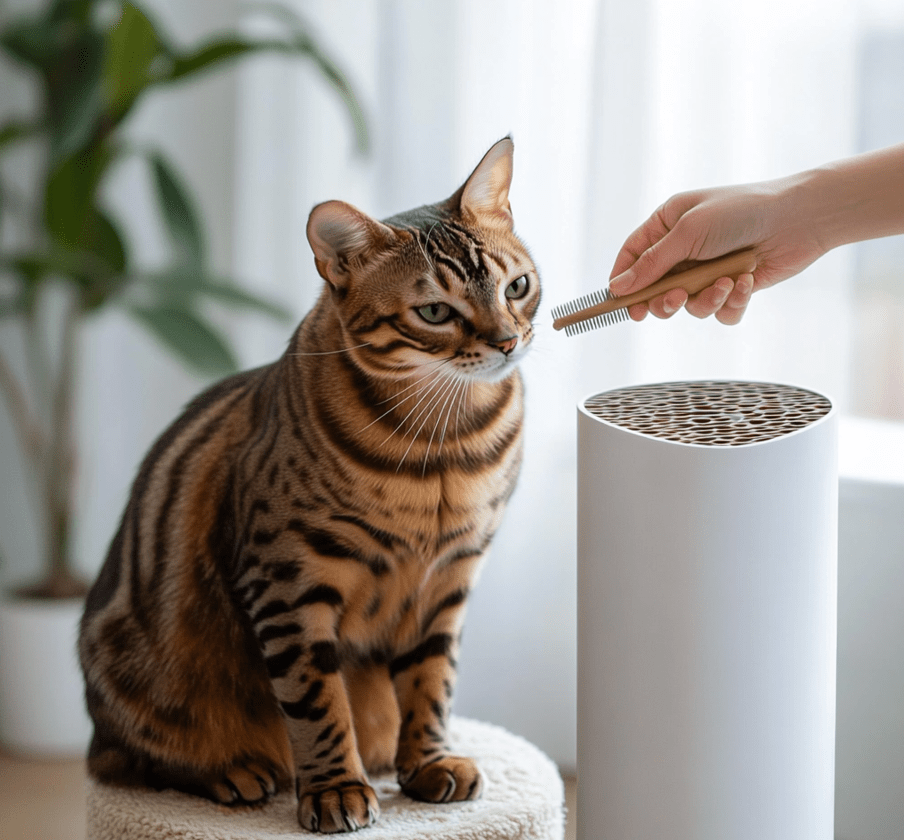
Step 1: Conduct a Home Safety Audit
Walk through your home to identify potential escape routes. Pay attention to:
Doors: Front, back, and patio doors that may be left ajar.
Windows: Low or accessible windows, especially those without secure screens.
Vents and Chimneys: Small openings that a Bengal could squeeze through.
Fences or Balconies: Outdoor areas with gaps or low barriers.
Cabinets and Furniture: Spaces where Bengals might hide or access exits.
Involve all household members to ensure everyone understands the importance of vigilance.
Step 2: Secure Doors
Bengals can dart out when doors are opened or even learn to manipulate handles. Implement these measures:
Install Door Locks: Use child-proof locks or high-placed deadbolts that Bengals can’t reach.
Add Door Springs: Automatic door closers ensure doors shut quickly.
Use Double Barriers: Create an “airlock” system with a gated area or secondary door (e.g., a screen door) to block escapes.
Train Household Members: Teach everyone to check for the cat before opening doors and to close them immediately.
Step 3: Fortify Windows
Windows are a common escape point for agile Bengals. Secure them with:
Sturdy Screens: Install pet-proof screens made of heavy-duty mesh or metal that resist clawing or pushing.
Window Locks: Ensure all windows have secure latches; consider adding secondary locks for extra protection.
Limit Access: Place furniture away from low windows to prevent jumping access.
Window Guards: For high-rise homes, install guards to prevent falls or escapes from open windows.
Step 4: Block Small Openings
Bengals can fit through surprisingly small gaps. Address these vulnerabilities:
Seal Vents: Use pet-proof vent covers or mesh to block access.
Close Chimneys: Install chimney caps or screens to prevent escapes.
Check Appliances: Ensure gaps around dryers, HVAC units, or plumbing are sealed.
Inspect Walls: Look for loose panels or holes that could lead to crawlspaces.
Use foam, caulk, or metal mesh for permanent seals, and check periodically for wear.
Step 5: Secure Outdoor Areas
If your Bengal has access to a balcony, patio, or yard, make these areas escape-proof:
Install Cat-Proof Fencing: Use roller bars or angled toppers to prevent climbing. Systems like Oscillot or Purrfect Fence are designed for cats.
Enclose Balconies: Add pet-safe netting or screens to create a “catio” effect.
Check Gates: Ensure gates latch securely and have no gaps underneath.
Supervise Outdoor Time: Never leave your Bengal unattended, even in a secured area.
Step 6: Provide Indoor Enrichment
A bored Bengal is more likely to attempt escapes. Keep them engaged with:
Cat Trees: Multi-level trees for climbing and perching.
Interactive Toys: Feather wands, laser pointers, or puzzle feeders to stimulate hunting instincts.
Window Perches: Allow bird-watching to satisfy curiosity.
Hunting Games: Hide treats or toys for a “treasure hunt” to mimic outdoor exploration.
Rotate Toys: Switch toys weekly to maintain novelty.
A stimulating environment reduces the urge to seek adventure outside.
Step 7: Train Your Bengal
Behavioral training can reinforce staying indoors:
Positive Reinforcement: Reward your Bengal with treats or praise for staying away from doors or windows.
Deterrents: Use pet-safe motion-activated sprays or double-sided tape near exit points to discourage approach.
Leash Training: If your Bengal craves outdoor time, train them to walk on a harness for safe exploration.
Recall Training: Teach your cat to come when called, which can help if they slip out.
Consistency and patience are key to successful training.
Step 8: Use Technology
Modern tools can enhance your escape-proof strategy:
Microchip: Ensure your Bengal is microchipped with up-to-date contact information in case they escape.
GPS Collars: Use a cat-safe GPS tracker for real-time location monitoring.
Pet Cameras: Install cameras to monitor your Bengal’s behavior when you’re not home.
Smart Locks: Use app-controlled locks to secure doors remotely.
Step 9: Maintain Vigilance
Regularly inspect your home for new vulnerabilities, especially after renovations or furniture rearrangements. Update security measures as your Bengal learns new tricks or as their behavior changes with age.
Common Escape Points and Solutions
Here’s a quick reference for addressing typical escape routes:
|
Escape Point |
Solution |
|---|---|
|
Front/Back Door |
Door springs, double barriers, child-proof locks |
|
Windows |
Pet-proof screens, window locks, furniture barriers |
|
Vents/Chimneys |
Metal mesh covers, chimney caps |
|
Balcony/Patio |
Netting, cat-proof fencing, supervised access |
|
Gaps in Walls |
Seal with caulk or foam, regular inspections |
Common Mistakes to Avoid
To ensure your home is truly escape-proof, steer clear of these pitfalls:
Underestimating Your Bengal’s Intelligence: Assume they can learn to bypass simple locks or barriers.
Relying Solely on Training: Behavioral training is not foolproof; physical barriers are essential.
Neglecting Outdoor Areas: Even supervised outdoor time requires secure enclosures.
Ignoring Household Habits: Ensure all family members or visitors follow escape-proof protocols.
Skipping Enrichment: Without indoor stimulation, Bengals are more likely to attempt escapes.
Additional Tips for an Escape-Proof Bengal Cat Home
Beyond securing exits, consider these strategies to enhance safety and engagement:
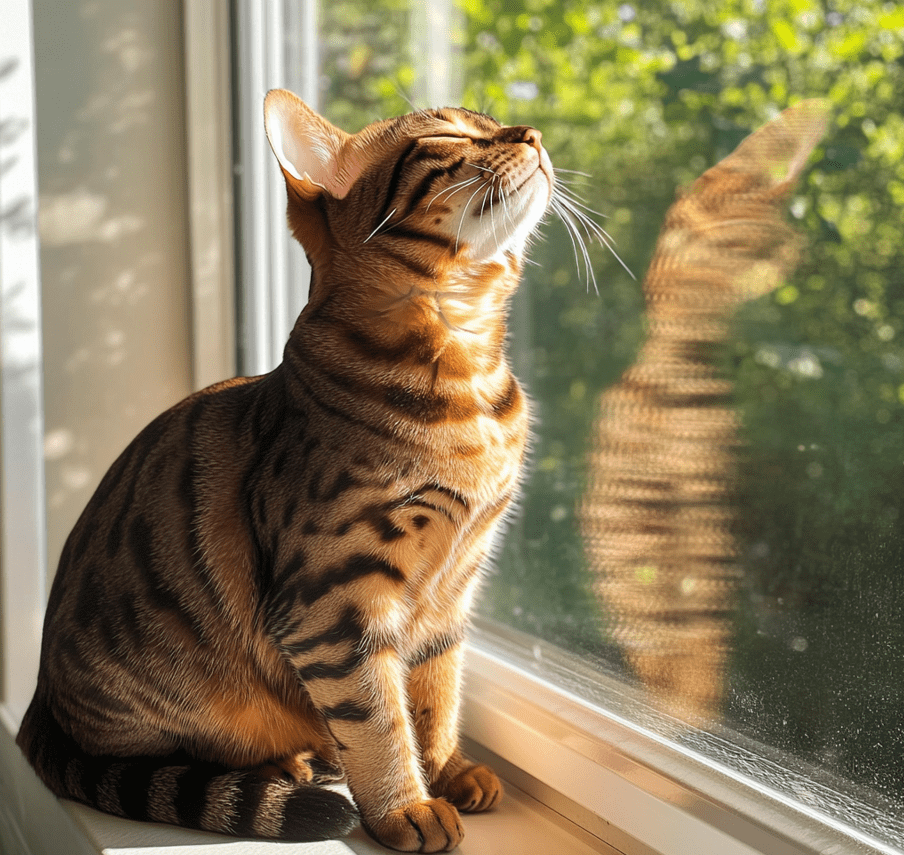
Spay or Neuter Your Bengal
Unaltered cats are more likely to roam in search of mates. Spaying or neutering reduces this drive, making escapes less likely.
Create a Catio
A catio (cat patio) is an enclosed outdoor space where your Bengal can enjoy fresh air safely. Build one with sturdy netting, a solid frame, and climbing structures.
Monitor Health and Behavior
Sudden escape attempts may signal stress, boredom, or health issues. Consult a veterinarian if your Bengal’s behavior changes.
Educate Visitors
Inform guests about your escape-proof protocols, such as keeping doors closed and watching for the cat during arrivals or departures.
Prepare for Emergencies
Have a plan in case your Bengal escapes:
1.Keep a recent photo and description of your cat.
2.Store contact information for local shelters and veterinarians.
3.Post flyers and check online lost-pet groups immediately.
Conclusion
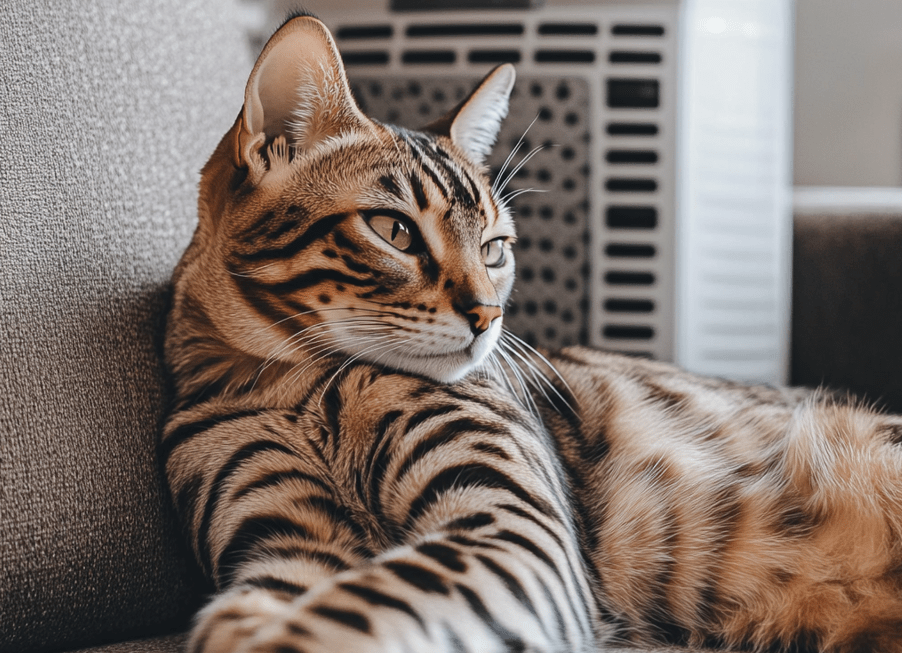
Making your home escape-proof for a Bengal cat is a critical step in ensuring their safety and well-being. By securing doors, windows, and outdoor areas, providing ample indoor enrichment, and training your Bengal to stay safe, you can create a secure environment that satisfies their curious nature. With the strategies outlined in this guide, you’ll not only prevent escapes but also foster a stimulating, happy home for your feline companion.
Start implementing these escape-proof measures today, and enjoy peace of mind knowing your Bengal is safe to explore their indoor world. By building a secure and engaging environment, you’ll strengthen your bond with your curious Bengal and keep them thriving for years to come.


